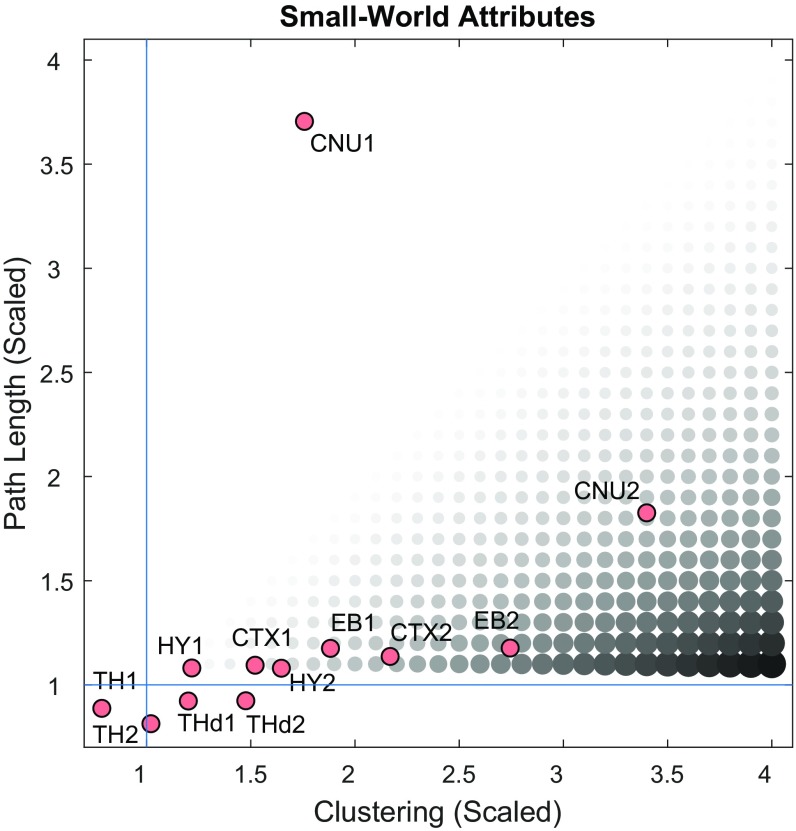Fig. 3.
Comparison of small-world analysis for the thalamus and other forebrain divisions. Small-world networks have 2 properties: highly clustered nodes (densely interconnected) and short paths connecting the nodes. Clustering is computed as the nodal mean of the weighted and directed clustering coefficients, whereas path length is computed as the global mean of the weighted path lengths between all node pairs. Both metrics are scaled by the median of the corresponding measures obtained from 1,000 degree-preserving randomized networks. The diameter and gray level value of circles correspond to the ratio between scaled clustering and scaled path length, the small-world index (23). For a network to display small-world attributes, this index should be >1 with a high (scaling ≫1) clustering index and a short (scaling near 1) path length. Neither the TH1 and dorsal thalamus (THd1) nor the TH2 and dorsal thalamus (THd2) show small-world features. Disconnection of the THd1/THd2 networks required the use of medians for computing small-world metrics. For comparison, values are also plotted for previously reported subconnectomes for the endbrain (EB1 and EB2) (11), its component parts, the cerebral cortex (CTX1 and CTX2) (3), and cerebral nuclei (CNU1 and CNU2) (4).

